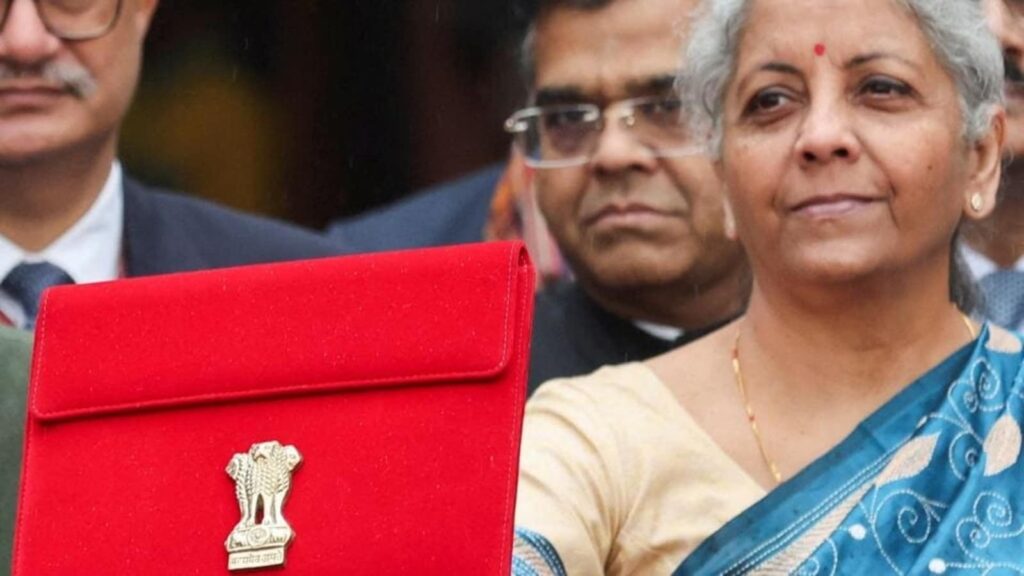India’s annual budgeting exercise, the Union Budget, presented on February 1 every year, has implications on politics, economics, and consumer and business sentiment. It is also a reflection of the prevailing political context, economic situation, and sentiment. This year, in her sixth essay as finance minister (FM), Nirmala Sitharaman’s task was to present not a budget, but an interim one — and that is exactly what she did.
Interim budgets do not always stick to this script; 2019 is still recent enough for people to remember Piyush Goyal’s — he was standing in for then FM Arun Jaitley — marathon effort. That interim budget introduced PM-Kisan, the cash transfer scheme for farmers, a move that helped quell discontent among farmers, and played its part in bringing the Narendra Modi government back to power for a second term, with an increased majority.
In contrast, Sitharaman’s presentation on Thursday was faithful to the precedent of an outgoing government being content to push a vote on account, although the first part of her speech focused, as it was expected to, on the government’s achievements over the past decade. Even as a political speech, it was measured and almost matter of fact, with no angry comparisons with the performance of past governments (though she talked about issuing a white paper on it) or barbs aimed at Opposition parties. This is telling, for it suggests that the government is confident of returning to power in the coming general elections. Recent events in the fledgling alliance of Opposition parties that came together last year to express the ambition of taking on the BJP indicate that the government’s confidence isn’t misplaced.
But there is also a larger message in the interim budget: In 2019, the government had to tackle the issue of agrarian distress; in 2024, its assessment is that there are no similar issues to address. The thinking in government circles, seconded by many in the analyst and economist community, and reflected in data, is that if an economy is expected to grow by 7.3% in the current year (and in the current global environment), then something is working. That something is the government’s economic philosophy — one built around fiscal conservatism (even during the pandemic, the government eschewed the kind of handouts many western economies opted for); a focus on infrastructure and capital expenditure (the vote on account said this will increase on an already high base by around 11% to over ₹11 lakh crore, 3.4% of the estimated 2024-25 GDP); business- and investor-friendly policies; and an emphasis on welfare schemes. Apart from growth (driven more by government spending than consumption demand), it is an approach that has kept troublesome inflation in check (relatively better than other economies) and beaten street expectations on fiscal deficit.
If the interim budget is “more of the same” and “business as usual” — both terms popular with commentators — it is because it is just that, and for the simple reason that the current model appears to be working. For businesses and investors, this also ensures stability in economic (and more importantly, tax) policy. Not having to worry about the summer’s electoral outcome also gives this government the luxury of focusing on the really long-term — and Sitharaman did refer to the long-term objective of making India a developed nation (Viksit Bharat was a recurring term in her presentation) by 2047.
Critics may point to what they see as the budget’s neglect of rural India, with anecdotal reports suggesting that the rural economy isn’t in great shape, but this government has never subscribed to the narrative of a “K-shaped recovery”. There may be some substance to this narrative, but the government’s sweeping welfare schemes may well be able to offset any rural distress. In the first part of her speech, Sitharaman referred to the four “castes” or constituencies the Prime Minister has repeatedly referred to — the poor, women, young people, and farmers — and spoke of what her government has done for them in the past decade. This could be the focus of the BJP’s welfare schemes going forward, and also a counter to the demand for a caste survey by Opposition parties that sense an opportunity to regain some of the other backward class (OBC) vote that the former has successfully added to its own base over the past decade. Union home minister Amit Shah once told this newspaper that under PM Modi “a new caste has emerged in the country — that of beneficiaries”.
That the interim budget did not see the need to sweeten the deal for these beneficiaries is the real story.
Continue reading with HT Premium Subscription
Daily E Paper I Premium Articles I Brunch E Magazine I Daily Infographics


